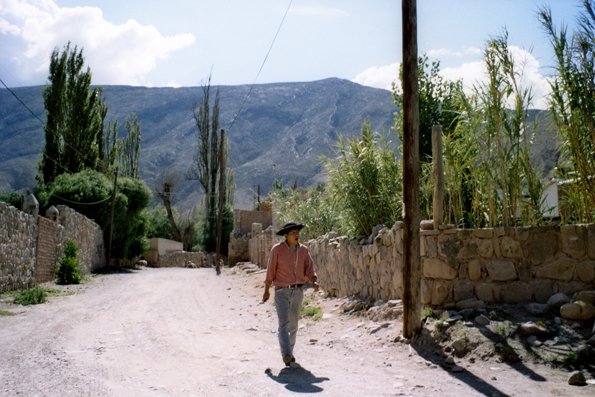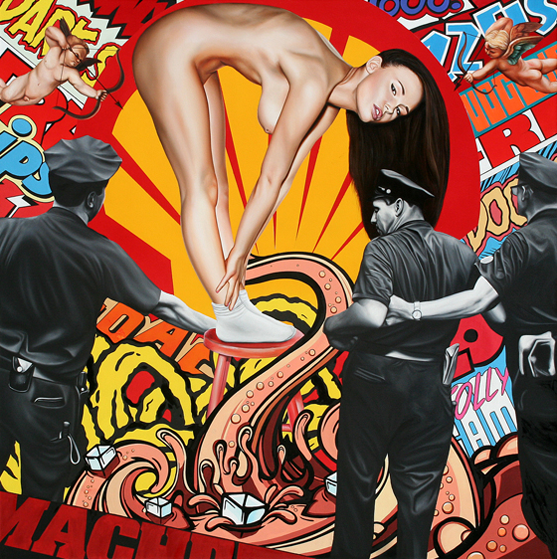Emaho: Can you tell us about how you first discovered illustration as your medium? Was there a particular moment or experience that drew you in? Who were your early influences or mentors? Were there illustrators, artists, or cultural stories from your childhood that helped shape your visual voice?
NS: While studying graphic design as an undergraduate, one of my professors recognized my talent for illustration and told me I had a special ability in this area. He introduced me to a publisher, and that was the first time I entered this path. My interest in illustration truly began there.
However, the roots of my passion for art go back to childhood. At around eleven or twelve, one of my cousins would draw caricatures of faces, and I was deeply inspired by those. From that age, I started drawing portraits and imaginary faces with distinct moods, gradually immersing myself in the world of art. It was at university, though, that I realized illustration was what I was meant to pursue.
One day, almost overnight, I found myself interested in Iranian miniature painting—a field I hadn’t paid attention to before. I discovered how inspiring Iranian miniatures could be, which in turn led me to explore and become fascinated with Chinese and Japanese artworks. These two sources of inspiration have had a profound and enduring influence on my visual style.

Emaho: Your work ranges from book illustration, animation, commercial / wall work to children’s book projects. How do you decide which projects to take on, or what medium to use? Could you walk us through your process when starting a new illustration — from concept/sketch to final piece? How much is prepared in advance vs discovered along the way?
NS: I am always experimenting. Since it’s important for me to bring a fresh perspective to each project, I usually seek out work that offers opportunities for discovery and exploration. I choose projects where I feel I can fully express my creativity and create something unique.
In my practice, I constantly try new techniques and ideas. I am especially drawn to projects that are more complex in composition or concept, as my mind enjoys the challenges these types of work present. For me, details and intricate structures are always exciting.
The medium I use for each project depends entirely on the work itself. I usually let the project decide which material is most suitable—sometimes paper works best, other times fabric or different materials. What matters to me is that the medium harmonizes with the spirit of the project.
In fact, when I work on a project that demands greater creativity, I feel personal growth—as if my mind is nourished by creativity and expands itself.
Emaho: Your illustration work is known for its unique style and emotional depth. How would you describe your artistic voice to someone seeing your work for the first time?When you’re illustrating stories for children (like Daal’s Daughter), how do you balance cultural authenticity, narrative clarity, and visual creativity?
NS: For someone seeing my work for the first time, I would describe my “artistic voice” as a combination of intricate details and delicate emotions. I always strive to convey both feeling and story in my illustrations, so that viewers can appreciate not only the visual beauty but also the inner emotions of the characters and the atmosphere of the scene.
When I work on children’s stories, maintaining a balance between cultural authenticity, narrative clarity, and visual creativity is always important to me. I aim to preserve precise cultural details while ensuring that the illustrations are understandable and engaging for children, bringing the story to life. Achieving all these layers is not something that comes from thought alone; they must be internalized in the mind and spirit in order to be carried through in my work, and this process takes time.
Emaho: Your work often carries powerful themes and narratives. How do you decide what story or message to convey in your illustrations?
NS: The choice of story or message I convey through illustration usually begins with something I feel is important or sparks my curiosity. Sometimes it is a personal experience; other times, it is a social or cultural issue that I believe deserves attention.
For me, illustration has always been a tool for exploration and expression, not merely for visual appeal. Before starting a project, I try to connect with myself and identify what feels tangible and honest. From there, ideas emerge, and the visual direction of the work gradually takes shape.
In other words, the message and narrative are neither imposed externally nor pre-planned; they are discovered and shaped throughout the creative process. This approach allows me to create illustrations that are both emotional and authentic.
Emaho: The award-winning poster that earned you the Grand Prix touched many hearts worldwide. Could you share the story behind its conception and what you hoped to express through it?
NS: This project arose from an inner need—a need to convey a message that is both emotional and universal. While developing the idea, I wanted to create something that would encourage reflection while also evoking empathy and human connection.
For each form, I aimed to maintain its independence while infusing a unique creativity so that through composition and design, each part could communicate its message as well as the overarching narrative. I paid close attention to color, composition, and the placement of elements, designing everything thoughtfully to create a cohesive visual and emotional experience.
My goal was for the project to be not just a beautiful image but a visual and emotional journey that allows each viewer to grasp part of its message and feeling. For me, the most important aspect was that the work could convey the voice of humanity and solidarity in an honest and authentic way.
Emaho: How do you balance your cultural Persian identity and universal appeal in your illustrations, especially given your international recognition? When people look at your illustrations, what feelings or reflections do you hope to inspire in them?
NS: For me, Persian cultural identity has always been a natural and inherent part of my work. While my identity is Iranian and I strive to reflect it in my art, I have always approached it with a fresh and modern perspective. This identity is expressed not as a slogan but through the emotions, forms, and narratives I grew up with, which flow naturally in my work.
At the same time, illustration has a universal language, and I aim for my work to resonate with an international audience through a modern and minimalist lens. My goal is that when someone views my work, they connect not only with its visual beauty but also with its human and emotional essence. I hope viewers can experience empathy, cultural connection, as well as wonder and curiosity. In this way, my work is both Iranian and global, a balance achieved through honesty with myself and a personal, modern perspective.
Emaho: For aspiring illustrators, what advice would you give about developing a distinctive style and navigating the competitive world of visual arts?
NS: For young illustrators, the most important advice is to trust themselves and their inner voice. Finding a unique style takes time and requires experience, experimentation, and persistence. They need to create a lot of work, try various techniques and mediums, and allow mistakes and discoveries to become part of the learning process.
It is also crucial to remain sensitive to the world around them—observing, studying, and being curious about culture, art, and nature can be a great source of inspiration. A personal style emerges when an artist works honestly with themselves and their inner world, rather than merely imitating others.
In the competitive world of visual arts, patience and perseverance are key. Focusing on creating sincere, high-quality work, rather than chasing trends, helps artists find their true artistic voice and gain recognition over time.


















